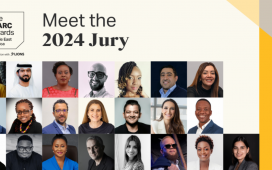Content and data feature heavily in Elie Khouri’s 14 highlights for 2014. They will be at the heart of the industry’s transformation
We’ve become quite used to uncertainty – almost the only certainty around – so many among us will greet the new year with single-digit optimism. Despite the geopolitical clouds on the horizon, there are several opportunities piercing through and trends on which we can capitalise to improve the forecast. Here are 14 trends, topics and issues that we expect to feature in 2014.
1) The Fifa World Cup in Brazil promises to be a stunning spectacle and, as it will partly overlap with Ramadan, the time difference will allow key games to be shown just at the right time. The love of football runs deep here and brands will find in the event a perfect reason to communicate with audiences. World Cup-related media investments are expected to top $100 million in the region.
2) The programming trends that have led to audience peaks outside of the Ramadan season – thanks to ‘shiny-floor’ formats – will develop even further. This should affect how TV stations plan their schedules, since Ramadan used to be the year’s main driver of advertising income. The increase in programming investments is certainly a positive trend for all.
3) The measurement of media performance in general and TV audiences in particular will remain a hot topic in 2014, as we’ll undoubtedly yo-yo some more on the long-term viability of people meters in Saudi Arabia, the UAE, Lebanon and Egypt. There is a will but the way is much less obvious, somehow contradicting the old adage.
4) The digital transformation of the media landscape is partly responsible for this. TV content is no longer confined to the TV screen and measuring the performance of a show isn’t confined to its ratings. This trend will continue to affect many a brand’s communication strategy. This is already factored into our video-neutral planning and this year will see the correlating of programme-based tweets with ratings to draw meaningful conclusions on affinity and investments.
5) New media giants will increasingly include digital companies that were built and are thriving on data. Few would have thought five years ago that key media negotiations would one day involve Google, Facebook, Twitter and Yahoo!. Their combined share of investments will grow at least three times as fast as the rest of the market. Second-tier media owners will have to reconsider their competitive set and approach to stay relevant for consumers and brands. In order to achieve scale and secure their seat at the negotiation table, mergers could occur.
6) The growth in media investments will accelerate and achieve double digits in 2014. The share of digital will rise faster still. Digital investments should achieve $600 million in 2014 and in about three years’ time, they will cross the $1 billion mark. TV is managing its transition to digital better than other media, both in audience and in commercial terms, finding new ways to distribute and monetise its content digitally.
7) Data is leading media agencies to abandon the old linear approach to media planning. Instead, we will work more and more with a media eco-system where everything is interconnected. With more and more data coming through, we’ll focus more on quality rather than just quantity.
8) Mobile devices, used by increasingly time-poor consumers to maintain control over their lives, will fin-ally claim a respectable share of marketing investments. With options extending way beyond apps and mobile sites, marketers and agencies will find a growing role for the smallest of the screens in a multi-screen media environment. So much so that we expect mobile marketing investments to double and their share to rise by 50 per cent, faster than the rest of digital investments.
9) Changing technologies lead to changing lifestyles and, in turn, decisions and behaviours. This is fuelling the rapid growth in e-commerce in the region, at 45 per cent according to sources. Currently standing at $15 billion, e-commerce will only increase as more retailers open up online stores and e-tailers grow in popularity. B2B is also a huge contributor to the trend.
10) A deeper understanding of consumers will be a major development this year. Many initiatives and trends will enhance the level of precision in our decision-making process, whereby we will prospect rather than target consumers. The headline-grabbing development in this trend is wearable technology. The additional layer of information it provides will eventually create an intuitive digital ecosystem. The challenge for agencies will be to conceive ways for brands to play a part in a seamless and relevant way. With this and other technologies, we are gradually moving towards addressable advertising and targeting individuals rather than profiles. We’re not there yet but the wheels are certainly in motion.
11) The creative process will increasingly be turned on its head. Creative messaging and content will increasingly be decided on the basis of real-time data derived from consumer interactions. Media agencies will start transforming into a new breed of data agencies with a creative streak.
12) Content in all its forms will become even more critical as we move further away from push and deploy pull strategies. Be it in performance, social, mobile marketing, branded entertainment or even analytics, a brand will succeed or fail on its ability to craft and distribute quality content to fuel conversations and spark consumer
interest. Short-form and bite-size content, specifically, will prove more and more popular with both consumers and brands. UGC is moving in this direction too so brand communications will see its nature evolve, affecting performance metrics along the way. This will require agencies to enhance their skills in this area.
13) Iran, with a population three times larger than Saudi Arabia’s, is taking the first steps towards a durable end of the sanctions that have battered its economy. Should these lead to a positive conclusion, this frontier market shows enough promise to provide significant growth opportunities for brands and the marketing sector.
14) Entrepreneurs and SMEs, particularly in the tech and media sectors, are attracting growing interest. Both the number of transactions and their size are increasing, with crowdfunding making a strong entrance on the market as well. In the past few years, about half of these investments were directed to the information techno-logy sector, suggesting an appetite among VC funds in the region for digital start-ups. These and other SMEs are not only budding advertisers, promoting themselves through social media and performance marketing, they are also future heavyweights in the making. As key com-ponents of our developing internet economy, we have a role to play in supporting and incubating them.
There are good reasons to anticipate a positive year in MENA. As long as we advance with our eyes wide open, ready for any eventualities and mindful of every opportunity, we should be able to capitalise on the economic growth of 4-5 per cent this region is predicted to enjoy. This is an environment many of our counterparts around the world can only dream of. Let’s focus on creating the future we want for ourselves.
Elie Khouri is the CEO of Omnicom Media Group MENA









